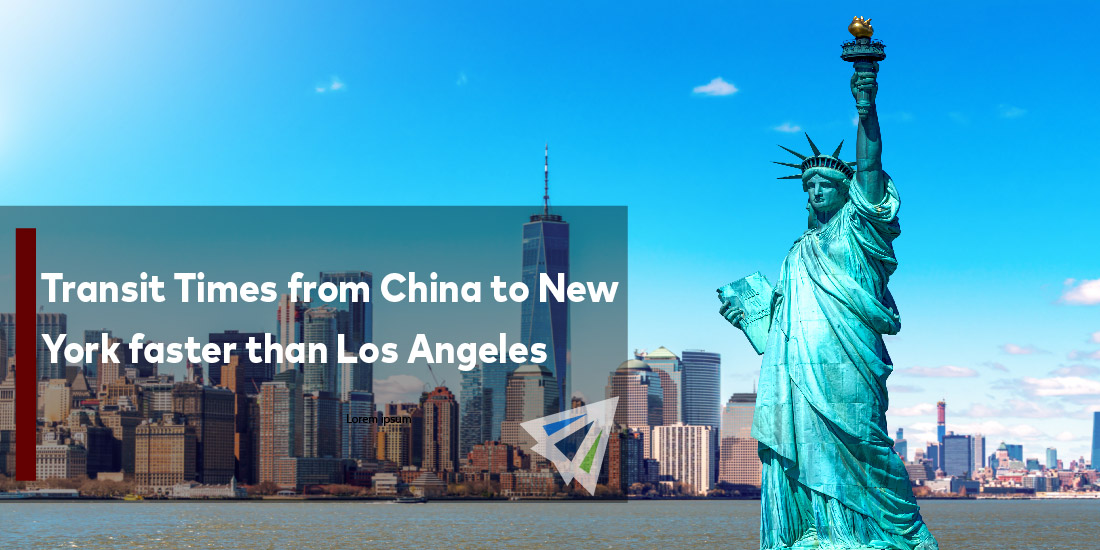Transit Times from China to New York faster than Los Angeles
We all know the phrase—desperate times call for desperate measures. In the shipping industry, it’s constantly in play, and it’s happening now with cargo en route from China to the U.S.
When importing from China, cargo has almost exclusively travelled across the pacific to the west coast of the United States, however, recent market conditions are causing shippers and carriers to explore alternatives. The congestion at the Southern Californian ports is so severe that it has more than doubled wait times for ocean vessels traveling to Long Beach and Los Angeles ports. In fact, the significant congestion even stretches to the vessels’ port of origin as ships wait several days before even attempting to make their way to the destination ports.
So, what is the solution to all this madness?
Rerouting cargo from China to the east coast of the United States.
Shorter Transit Times from China to New York
Shipping from China to Southern California is a straight line and the quickest method of getting cargo into the U.S. However, the congestion is so bad at these destination ports that carriers are instead finding it is quicker to ship cargo to the east coast of the United States.
Recent reports show that the average transit and discharge time from China’s main ports to the United States west coast (predominantly Southern California) is roughly 45 days, which is a near 100% increase since May 2021. Before the pandemic entirely, transit and discharge time along that same route was only around 15-16 days.
So, what does transit time look like from China to the United States east coast? Currently, it is standing at 33 days. While it would otherwise be outlandish to take this route, the severe backups of vessels waiting offshore in Southern California make this alternative route a viable and, even, preferable option.
We are seeing a massive throughput of containers from ships taking this route from China to New York/New Jersey ports. What’s even more incredible is the efficiency of shipping along this route despite the short hours. Several terminals only operate until 4:00pm. If these hours were extended in a similar fashion as seen in Sothern Californian ports, efficiency and container volumes at these east coast ports would skyrocket.
The Need for Visibility: Information Highways
The recent changes in cargo routing from China to the U.S. have certainly helped to alleviate some congestion (or at least prevented more from being introduced into the mix.) However, issues with congestion and vessel arrivals will likely continue until we work out one of the largest kinks in the supply chain industry – lacks in immediate access to information and the failure to adjust plans accordingly.
On Thursday, the Port of Long Beach announced it is working with Uncomn, a Los Angeles-based consulting firm, to provide digital end-to-end visibility across all transportation modes. The system is expected to be implemented in 2022 and is being marketed as a supply chain information highway.
Uncomn is aiming to help shippers track their cargo across the supply chain even as their cargo is transferred from mode-to-mode. Shippers have struggled with supply chain visibility over the last couple years as vessels experience massive delays, port grounds end up in grid locks, and everyone scrambles to find and move their shipments. With this new information highway, shippers will have clear visibility into where their cargo is and will be able to appropriately modify their logistics plans to accommodate the changes.
Please reach to our team at InterlogUSA for more information or questions you have regarding your shipping situation.
